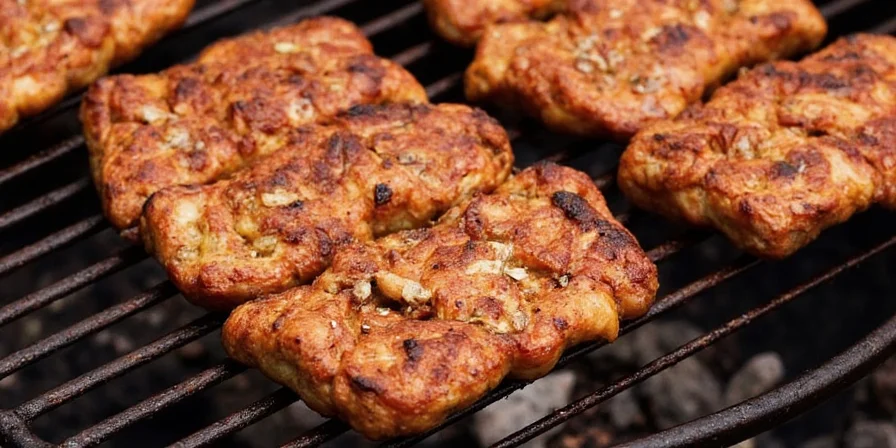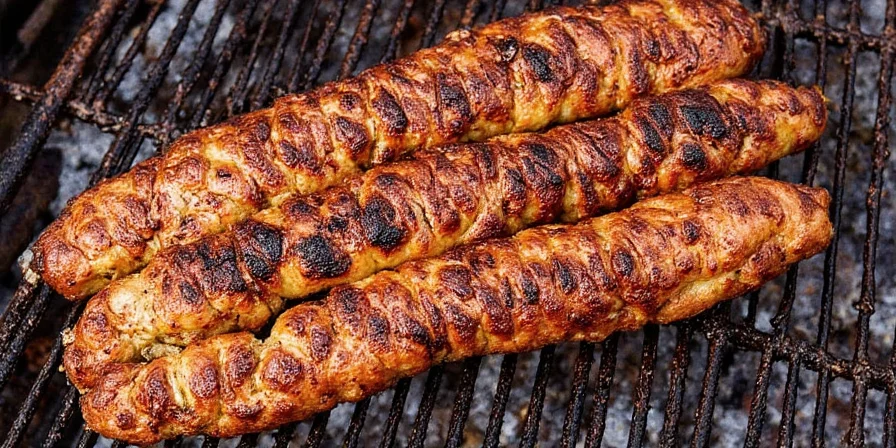Discover the best grilled seasoning techniques that deliver perfect flavor every time. This guide provides immediately actionable methods with specific measurements, timing, and ingredient ratios that home cooks can implement for restaurant-quality results.
Table of Contents
- The Best Grilled Seasoning Method: Dry Rub Basics
- Sweet, Salt, and Heat Balance Chart
- Smoked Spices That Transform Flavor
- Coffee Rub Recipe for Steak (With Measurements)
- Marinating Times by Meat Type
- Layering Flavors Technique
- When to Apply Seasoning for Maximum Flavor
- International Grilling Seasoning Blends
- DIY Seasoning Blend Formula (With Ratios)
- Proper Spice Storage for Long-Lasting Flavor
- Grilled Seasoning FAQs Answered
The Best Grilled Seasoning Method: Dry Rub Basics
For most grilled foods, a simple dry rub applied 30-60 minutes before cooking delivers superior flavor and texture. The ideal basic dry rub uses a 3:2:1 ratio of paprika, salt, and black pepper. For every pound of meat, use 1½ tablespoons paprika, 1 tablespoon kosher salt, and ½ tablespoon black pepper. This ratio creates perfect crust formation without overpowering the natural meat flavor.

Dry rubs work better than wet marinades for most grilling because they create a flavorful crust through the Maillard reaction. Wet marinades often wash away during cooking and can cause flare-ups. The salt in dry rubs draws out moisture initially but ultimately enhances browning and flavor penetration.
| Type | Ingredients | Best For | Application Timing |
|---|---|---|---|
| Dry Rub | Salt, pepper, paprika, chili powder, herbs | Steaks, chops, ribs | 30-60 minutes before grilling |
| Wet Rub | Dry spices + oil, vinegar, or mustard | Chicken, fish, vegetables | Immediately before grilling |

Sweet, Salt, and Heat Balance Chart
Creating balanced grilled seasoning requires precise measurements. Follow this exact ratio for consistent results:
- Sweet: 2 parts brown sugar (for caramelization)
- Salt: 3 parts kosher salt (for flavor enhancement)
- Heat: 1 part cayenne pepper (for controlled spiciness)
For a basic ¼ cup seasoning blend, use: 3 tablespoons brown sugar, 4½ tablespoons kosher salt, and 1½ tablespoons cayenne pepper. This ratio prevents burning while maximizing flavor development during grilling.

Smoked Spices That Transform Flavor
Adding smoked paprika (¼ teaspoon per ¼ cup rub) creates authentic wood-fired flavor without specialized equipment. For beef and pork, use ½ teaspoon mesquite powder per pound of meat. These smoked elements contain natural wood compounds that mimic hours of traditional smoking in minutes.
Coffee Rub Recipe for Steak (With Measurements)
This coffee-based dry rub creates complex flavor through natural chemical reactions with meat proteins. For ribeye or sirloin steaks:
- 2 tablespoons finely ground coffee
- 1½ tablespoons kosher salt
- 1 tablespoon brown sugar
- 1 teaspoon smoked paprika
- ½ teaspoon garlic powder
- ¼ teaspoon black pepper
Mix ingredients thoroughly, then apply generously to steaks 45 minutes before grilling. The coffee's chlorogenic acids react with meat proteins during cooking, creating unique flavor compounds not found in traditional rubs.

Marinating Times by Meat Type
Over-marinating causes texture problems. Use these precise timing guidelines for perfect results:
| Meat Type | Minimum Time | Maximum Time | Best Acid Base |
|---|---|---|---|
| Chicken Breast | 30 minutes | 2 hours | Lemon juice or vinegar |
| Chicken Thighs | 1 hour | 12 hours | Yogurt or buttermilk |
| Pork Chops | 2 hours | 24 hours | Apple cider vinegar |
| Beef Steaks | 30 minutes | 4 hours | Worcestershire sauce |
| Lamb Chops | 2 hours | 24 hours | Lemon juice and olive oil |

Layering Flavors Technique
Apply seasoning in stages for maximum flavor penetration:
- Before grilling: Apply oil-based wet rub containing garlic and onion powder
- During cooking: Sprinkle dry rub with paprika and cumin during final 5 minutes
- After cooking: Finish with fresh herbs and citrus zest
This method takes advantage of different compound solubilities, creating complex flavor layers rather than single-note intensity.
When to Apply Seasoning for Maximum Flavor
Timing matters more than most home grillers realize. For best results:
- Thin cuts (chicken breasts, fish fillets): Apply seasoning 15-30 minutes before grilling
- Medium cuts (pork chops, sausage): Apply 30-60 minutes before grilling
- Thick cuts (ribeye, brisket): Apply 1-2 hours before grilling, or salt 24 hours in advance
Salt needs time to penetrate meat for optimal flavor and texture. Applying too late results in surface-only seasoning that washes away during cooking.
International Grilling Seasoning Blends
Authentic global flavors require specific ingredient ratios and application methods:
| Cuisine | Signature Blend (¼ cup) | Best Meat Pairing | Special Tip |
|---|---|---|---|
| Korean | 2 tbsp gochujang, 1 tbsp sesame oil, 2 tsp garlic, 1 tsp ginger | Short ribs | Add 1 tsp pineapple juice for tenderizing |
| Mexican | 1 tbsp adobo, 1 tsp cumin, ½ tsp oregano, ½ tsp garlic | Pork shoulder | Mix with 2 tbsp lime juice before applying |
| Indian | 1 tbsp garam masala, 1 tsp turmeric, 1 tsp cumin, 1 tsp coriander | Chicken thighs | Marinate in ¼ cup yogurt first |
| Mediterranean | 1 tbsp oregano, 1 tsp lemon zest, 2 tsp garlic, 1 tsp thyme | Lamb chops | Mix with 2 tbsp olive oil before applying |

DIY Seasoning Blend Formula (With Ratios)
Create custom grilled seasoning using this foolproof ratio:
- Salt – 30% (4½ tsp per ¼ cup blend)
- Primary Flavor (paprika/cumin) – 30% (4½ tsp)
- Secondary Flavor (garlic/onion) – 20% (3 tsp)
- Heat (optional) – 10% (1½ tsp)
- Extras (herbs/sugar) – 10% (1½ tsp)
Example all-purpose blend for chicken: 4½ tsp kosher salt, 4½ tsp paprika, 3 tsp garlic powder, 1½ tsp black pepper, 1½ tsp dried thyme
Proper Spice Storage for Long-Lasting Flavor
Store homemade seasoning blends in airtight containers away from light and heat. For maximum potency:
- Use amber glass jars instead of clear plastic
- Add oxygen absorbers to containers
- Label with creation date
- Replace blends after 6 months
Test potency by rubbing a small amount between your fingers. If the aroma is weak or musty, it's time to make a fresh batch. Properly stored blends maintain 90% of their flavor for 3 months.

Grilled Seasoning FAQs Answered
What's the best grilled seasoning for beginners?
How do I prevent seasoning from burning on the grill?
Can I use the same seasoning for different meats?
Mastering grilled seasoning requires understanding both the practical application and the underlying principles. By following these specific measurements and timing guidelines, you'll consistently achieve restaurant-quality results at home. The perfect grilled seasoning creates a flavorful crust while enhancing the natural taste of your ingredients—not overwhelming them.

Start with the basic 3:2:1 ratio, then experiment with the international blends and specialty techniques. Your grill is ready—now go create consistently delicious results every time you fire it up.











 浙公网安备
33010002000092号
浙公网安备
33010002000092号 浙B2-20120091-4
浙B2-20120091-4